Macroascochyta L.W. Hou, L. Cai & Crous, gen. nov.
MycoBank number: MB 833497; Index Fungorum number: IF 833497; Facesoffungi number: FoF 11514
Etymology: Morphologically resembling the genus Ascochyta, but distinct in having larger conidia.
Conidiomata pycnidial, solitary or confluent, globose to sub- globose, semi-immersed or immersed in the agar, ostiolate. Pycnidial wall pseudoparenchymatous, multi-layered, outer layers pigmented. Conidiogenous cells phialidic, hyaline, smooth, globose, ampulliform to lageniform. Conidia cylindrical, bacilliform to fusiform, sometimes curved, hyaline, smooth- and thin-walled, aseptate, guttulate. Chlamydospores hyaline or pale brown, intercalary, unicellular, globose to subglobose, solitary, eguttulate. Sexual morph unknown.
Type species: Macroascochyta grandis L.W. Hou, L. Cai & Crous
Notes: – A new asexual species clustered in Didymellaceae as a distinct monophyletic clade (Fig. 1) in both ML and Bayesian analyses. This species was collected from Tradescantia sp. in post entry quarantine in New Zealand. Since fungi collected herein clearly form an independent lineage and are phyloge- netically segregated from other genera, we introduce Macro- ascochyta as a new genus to accommodate this species.
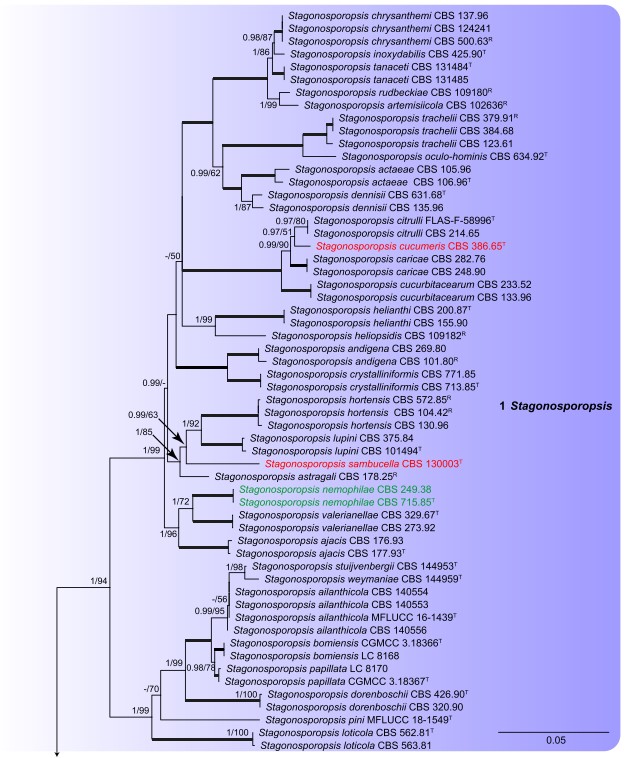
Fig. 1. Phylogenetic tree inferred from a Maximum Likelihood analysis based on a concatenated alignment of LSU, ITS, rpb2 and tub2 sequences of 597 strains representing Didymellaceae and outgroup sequences. The RAxML bootstrap support values (MLBS) above 50 % and Bayesian posterior probabilities (BPP) above 0.80 are given at the nodes (BPP/MLBS). Some of the basal branches were shortened to facilitate layout (the fraction in round parentheses refers to the presented length compared to the actual length of the branch). The scale bar represents the expected number of changes per site. Genera are delimited in coloured boxes, with the genus name indicated to the right. Strains with special status are indicated with a superscript letter after the accession number (R: representative; T: ex-type). The new species are printed in red font and new combinations in green font. The tree is rooted to Coniothyrium palmarum culture CBS 400.71, Neocucurbitaria aquatica culture CBS 297.74 and Pleiochaeta setosa cultures CBS 496.63 and CBS 118.25.
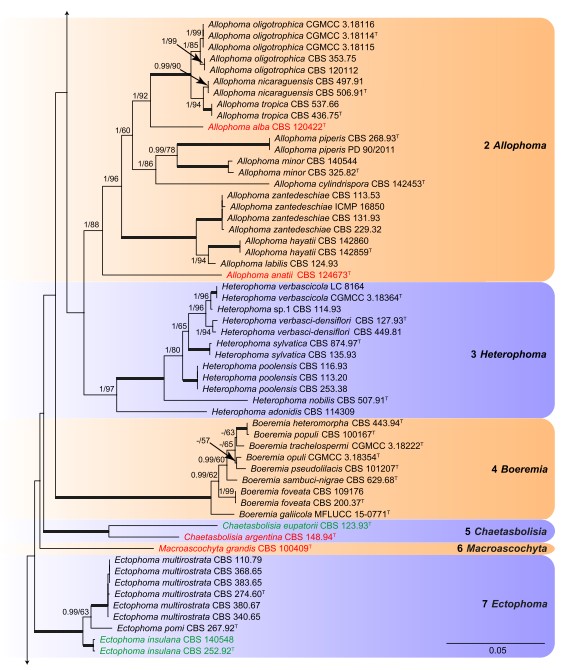
Fig. 1. (Continued).
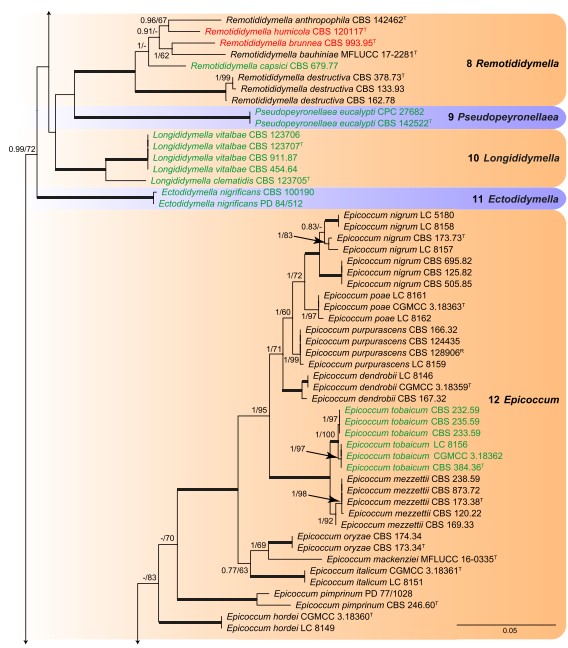
Fig. 1. (Continued).
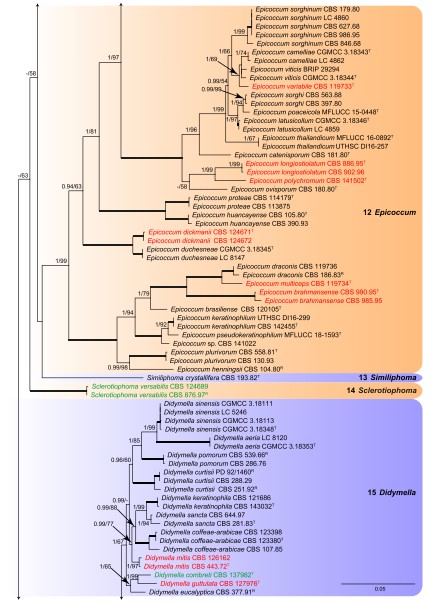
Fig. 1. (Continued).
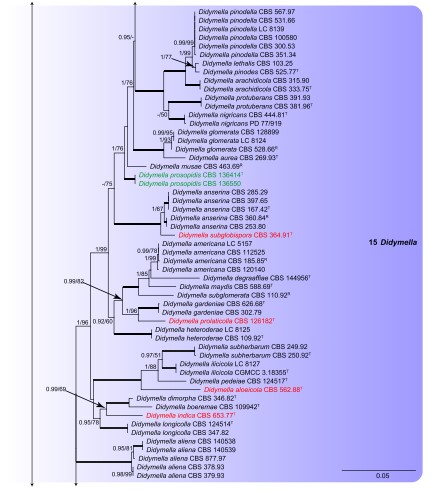
Fig. 1. (Continued).
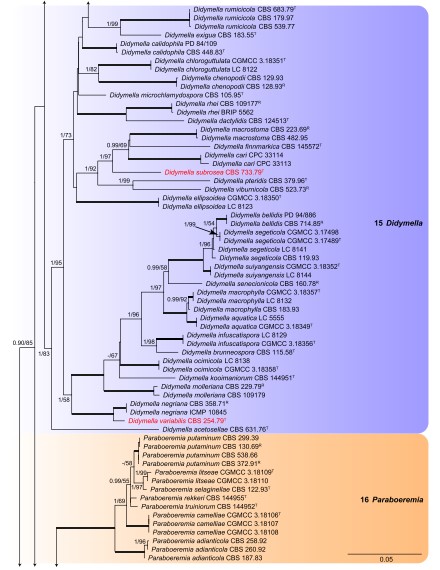
Fig. 1. (Continued).
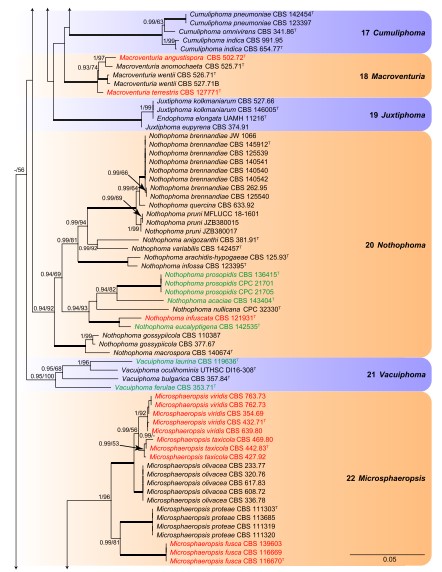
Fig. 1. (Continued).
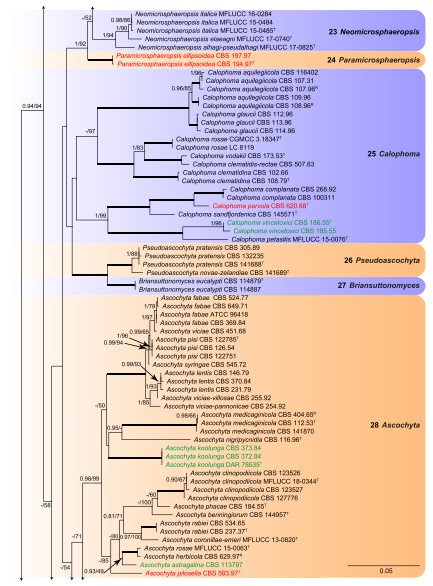
Fig. 1. (Continued).
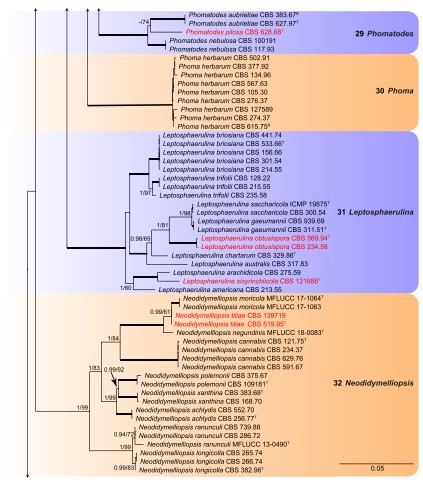
Fig. 1. (Continued).
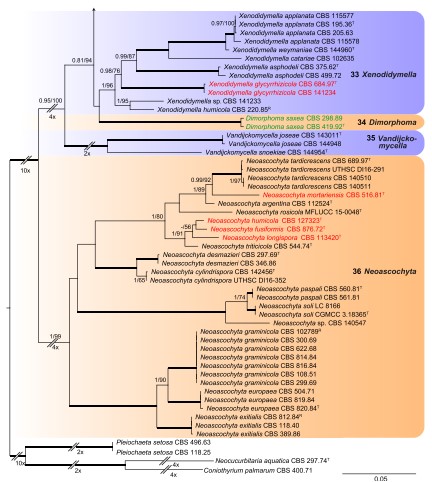
Fig. 1. (Continued).
Species
